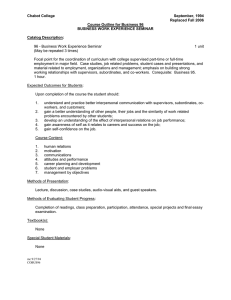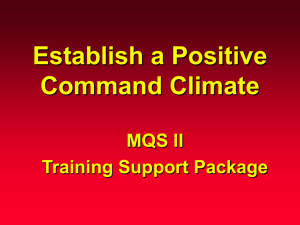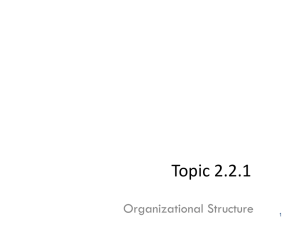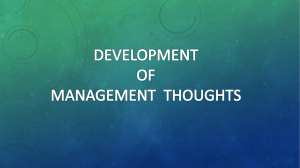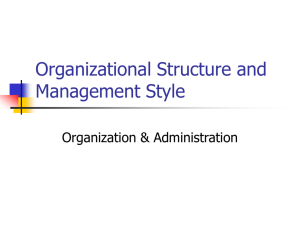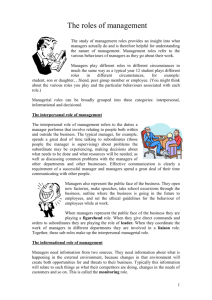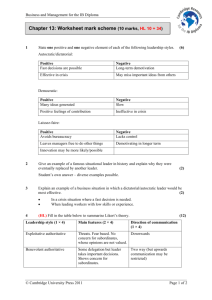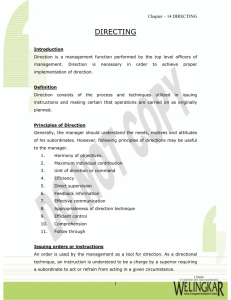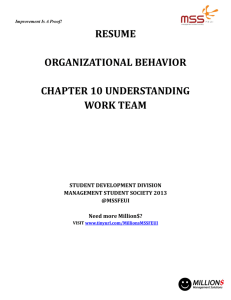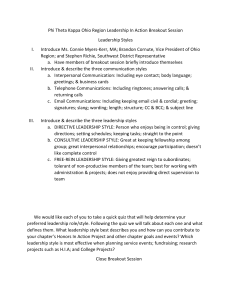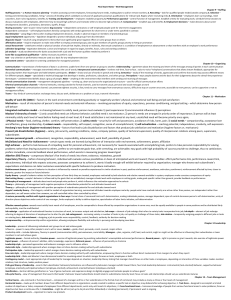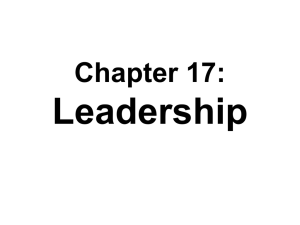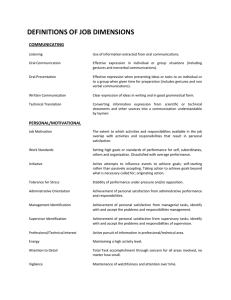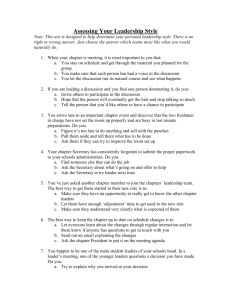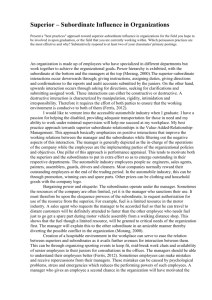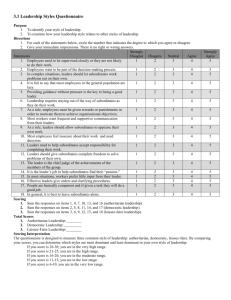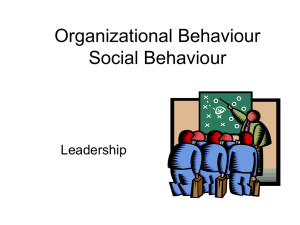CASE STUDY IV Theory X and Theory Y, System 1 and System 4
advertisement
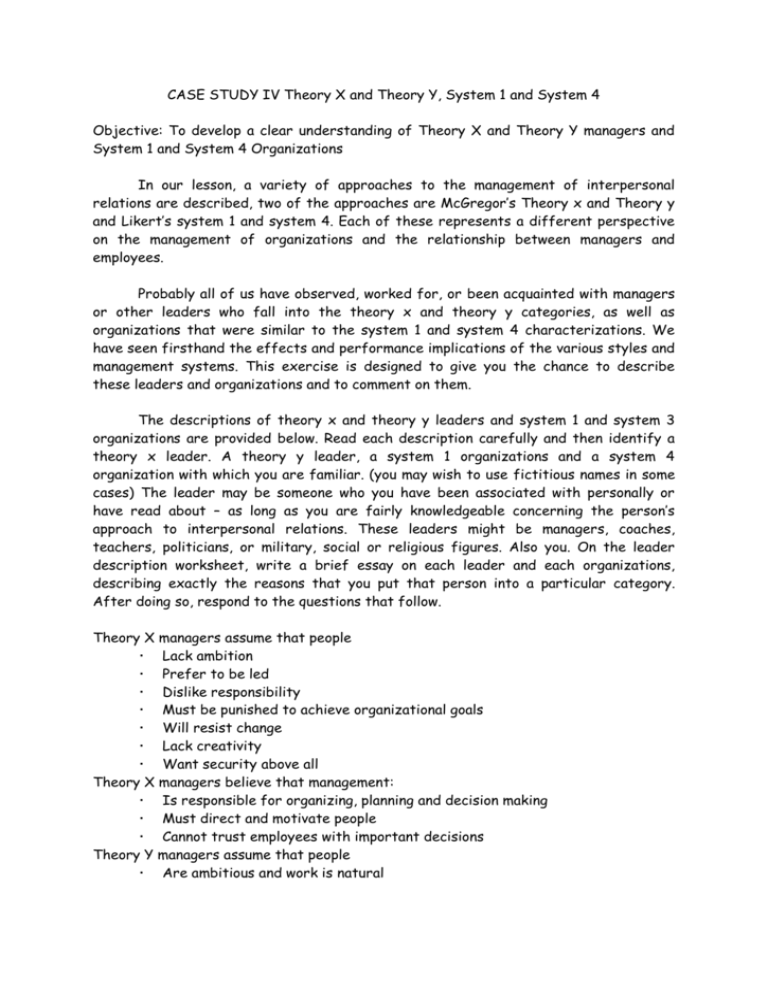
CASE STUDY IV Theory X and Theory Y, System 1 and System 4 Objective: To develop a clear understanding of Theory X and Theory Y managers and System 1 and System 4 Organizations In our lesson, a variety of approaches to the management of interpersonal relations are described, two of the approaches are McGregor’s Theory x and Theory y and Likert’s system 1 and system 4. Each of these represents a different perspective on the management of organizations and the relationship between managers and employees. Probably all of us have observed, worked for, or been acquainted with managers or other leaders who fall into the theory x and theory y categories, as well as organizations that were similar to the system 1 and system 4 characterizations. We have seen firsthand the effects and performance implications of the various styles and management systems. This exercise is designed to give you the chance to describe these leaders and organizations and to comment on them. The descriptions of theory x and theory y leaders and system 1 and system 3 organizations are provided below. Read each description carefully and then identify a theory x leader. A theory y leader, a system 1 organizations and a system 4 organization with which you are familiar. (you may wish to use fictitious names in some cases) The leader may be someone who you have been associated with personally or have read about – as long as you are fairly knowledgeable concerning the person’s approach to interpersonal relations. These leaders might be managers, coaches, teachers, politicians, or military, social or religious figures. Also you. On the leader description worksheet, write a brief essay on each leader and each organizations, describing exactly the reasons that you put that person into a particular category. After doing so, respond to the questions that follow. Theory X managers assume that people Lack ambition Prefer to be led Dislike responsibility Must be punished to achieve organizational goals Will resist change Lack creativity Want security above all Theory X managers believe that management: Is responsible for organizing, planning and decision making Must direct and motivate people Cannot trust employees with important decisions Theory Y managers assume that people Are ambitious and work is natural Seek responsibility and self-control is achieving goals Recognize and accept organization goals Are dynamic and flexible Are intelligent and posses creative potential Theory Y managers believe that: Management can delegate important decisions to lower levels Employees won’t be passive or resistant Employees have the ability to be high performance, to develop, to assume responsibility, and are self-motivated Management can trust employees Likert’s System 1 and System 4 Organizations System 1 (Traditional) System 4 (Participative) Leadership is not based on confidence and Leadership is based on confidence and trust. Subordinates don’t feel free to trust in subordinates. Subordinates discuss ideas with managers and the discuss the ideas with managers and their manager don’t use their opinions in ideas and opinions are used in decision decision making making. Motivation is based on fear, threat, Motivation is through economic rewards punishment, and some rewards. and involvement in setting goals. People at Responsibility for achieving goals all levels feel a responsibility for reaching decreases down the hierarchy. goals. Communications flow down from the top of Communications flow freely throughout the hierarchy and are viewed with the organization. Feedback is accurate suspicion. There is little feedback. Interaction between managers and Interaction between managers and employee is minimal and is viewed with employees is extensive, friendly, and fear and distrust. Little teamwork. based on a high degree of confidence and trust. A great deal of teamwork Decision Making is primarily at the top of Decision Making is dispersed but linked the hierarchy with little subordinate through teamwork. Subordinate are fully involvement. Acceptance of the decision is involved in decisions relating to their work. usually not considered. Goals are set the top of the organization. Goals are set through participation at the Goals are resisted. Performance goals are level they will be achieved where goals are relatively low. accepted. Performance goals are high. Controls are concentrated in top Controls are widespread and are used for management and are used in a punitive self-guidance and for coordinated problem way. solving. Leader Description Worksheet I Theory X leader Describe the leader’s style How doe the leader’s style affect employee performance? What are the advantages of the Theory X approach? What are the problems associated with the Theory X approach? Would you do anything different in this leader’s situation? II Theory Y leader Describe the leader’s style How does the leader’s style affect employee performance? What are the advantages of the Theory Y approach? What are the problems associated with the Theory Y approach? Would you do anything different in this leader’s situation? III System 1 organization Describe the important characteristics of the organization How do the characteristics of the organization affect performance? What are the advantages of the System 1 organization? What are the problems associated with the System 1 organization? How would you change this organization? IV System 4 Organization Describe the important characteristics of the organization How do the characteristics of the organization affect performance? What are the advantages of the System 4 organization? What are the problems associated with the System 4 organization? How would you change this organization?
